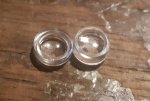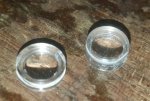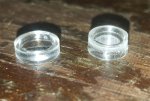- Joined
- Nov 26, 2017
- Messages
- 40
- Points
- 8
So i learned the hard way that my collimating lenses are made of plastic, and that crazy glue, or ca melts them... i ordered some replacement ones and they dont do what i was expecting... i was expecting to have a straight beam like i had before, but with these new lenses i get a focal point, and at any distance greater than about 6" from the lense, the beam starts to widen again... i end up with a 6" dot on the ceiling...
What am i missing here?
What am i missing here?
Attachments
Last edited:










